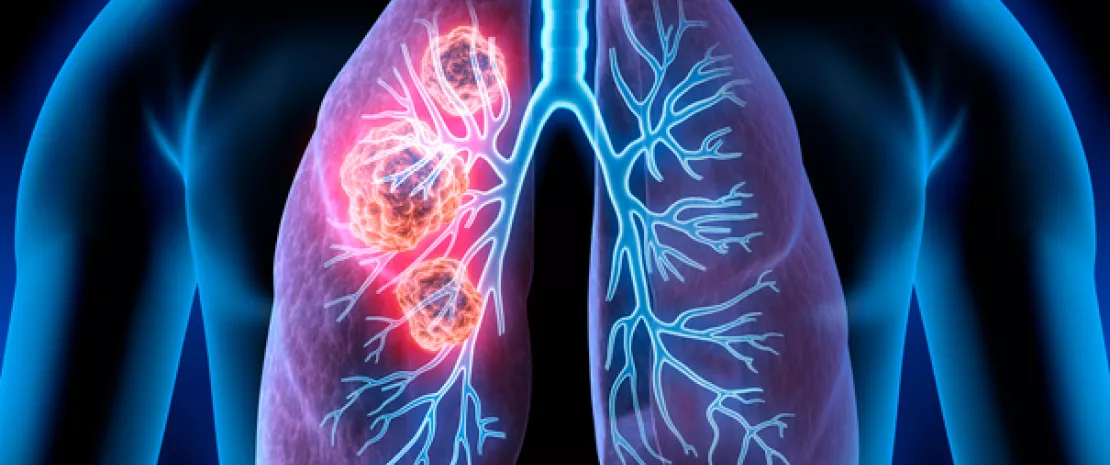Gut microbiota could be an indicator of early-stage lung cancer
Intestinal dysbioses have been detected in patients with early-stage lung cancer. Could this lead to the development of an early-stage, non-invasive test that would speed up care and improve chances of survival?
Sources
This article is based on scientific information

About this article
Often diagnosed at an advanced stage, lung cancer is associated to a high mortality rate. An earlier diagnosis would greatly improve both care and chances of survival. Can gut dysbioses serve as an indicator of lung cancer, as for many other diseases, including other types of cancer?
Specific gut dysbiosis signature as an indicator of the stage of cancer
The gut microbiota of 42 patients with (sidenote: Adenocarcinoma (37 patients), squamous cell carcinoma (3 patients), large-cell carcinoma (2 patients) ) of non-small-cell lung cancer (NSCLC) at an early stage (metastasis had taken place in only 3 patients), and that of 65 healthy control subjects, were analyzed using 16S rRNA sequencing. Intestinal dysbioses were observed in the patients with lung cancer: increased presence of species belonging to the Ruminococcus genus and the Lachnospiraceae and Enterobacteriaceae families, among others, compared to control subjects. Therefore, the composition of the microbiota may change as lung cancer develops. In addition, the composition of the intestinal microbiota was specific of each stage of the cancer, with some bacteria only present in the three patients displaying metastasis.
A diagnostic tool?
In order to develop a non-invasive diagnostic tool for early-stage lung cancer, 13 biomarkers based on (sidenote: Operational Taxonomic Unit groups of organisms usually not cultivated or not identified, classified on the basis of the similarity of the DNA sequencing of a given gene. Frequently used as an equivalent to the concept of species ) were identified. Together, these biomarkers made it possible to accurately predict the presence of lung cancer (97.6% of cases). This model was confirmed in a second cohort (34 patients and 40 control subjects), with its predictive power remaining high (76.4%), although lower than in the initial cohort. From this model it was possible to construct a “patient discrimination index” to identify patients with early-stage lung cancer. Based on a weighted score, the index is easy to use for clinical purposes. Its predictive power in the initial cohort (92.4%) was also higher than that measured in the validation cohort (67.7%). Larger cohorts could improve the model and its predictive power.










